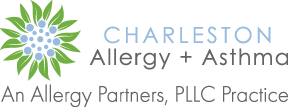Springtime allergies do not abide by our calendar year. Instead, the start of their season is determined by your location. In the Lowcountry of South Carolina, spring allergies are sprung unexpectedly early, with pollen from trees and grass that may surface as early as January.
We may only be at the start of winter, but why wait for spring allergy symptoms to strike when there are steps you can take today that will give you a leg up over those annoying seasonal sneezes and sniffles?
Start preemptive treatment.
Do not wait for your symptoms to hit full force. Start by visiting your local board-certified allergist. They will be able to assist you in discovering the root cause of your symptoms and help you develop a personalized plan of action.
Beginning allergy medications about two weeks prior to the typical start of spring allergy symptoms may also prove beneficial. Over-the-counter medications not only treat these inconvenient reactions but can sometimes help to lessen their severity when they arise.
Remember, these store-bought medications are not a “cure” for allergies – just a relief for symptoms. Those looking for a more permanent form of relief from spring and other allergies should consult with their board-certified allergist about immunotherapy treatment..
Get a jump start on spring cleaning.
An intensive, deep spring cleaning session can have substantial benefits in the lives of allergy sufferers. Getting an early start on this process will give you an opportunity to cleanse your home of any allergens built up during the winter months, like dust or mold, and will make it easier to keep your home clean once pollen spread is in full swing.
A proper spring cleaning should cover anything and everything from the dusting of furniture and light fixtures to a house-wide vacuuming session, the cleaning of air conditioner filters and more.
One important thing to keep in mind, especially if you are allergic to dust mites, is to clean frequently in order to reduce the likelihood of allergic reactions. It’s best to stay on top of dusting instead of pushing it off as a less frequent household chore.
Keep “new” pollen out.
While this is easier said than done, there are steps one can take that will help to limit your exposure to pollen and other outdoor allergens inside of your home.
- Avoid leaving doors and windows open as much as possible. Irritants are airborne and any open portal is an extended invitation for allergens to enter your home.
- Change your clothes after arriving back home. Pollen can stick to fabric, and the chances that you’ve picked up some on your travels can be high depending on the day’s pollen count. Changing after you enter your home reduces pollen’s likelihood to be transferred to furniture and other surfaces.
- Shower before crawling into bed. Cleaning off before you settle in for the night is a great way to ensure there are no leftover allergens left clinging to your hair which, if left in place, could end up on your pillow and face throughout the night.
Track pollen levels and build a schedule.
Complete avoidance of pollen and other allergens is a near-impossible task as we cannot control how much of and where these irritants collect. However, with the help of science and modern data collection, evading these allergens is a much more manageable task.
Pollen meters are a handy tool for those affected by spring allergies. These tools measure the current pollen count on a given day and assign a figure to these levels, indicating the severity of symptoms allergy sufferers may experience. In fact, Charleston Allergy and Asthma tracks the Lowcountry pollen count every weekday at our Summerville location, which is also home to the only local pollen meter in the tri-county area.
Fun fact: the pollen counts found on the American Academy of Allergy, Asthma, and Immunology’s (AAAAI) nationwide allergy level map come from our pollen meter right here at Charleston Allergy and Asthma. As a certified pollen counting station, we submit our pollen counts for the Lowcountry to AAAAI every weekday.
After familiarizing yourself with pollen count tools, it will be easier to create a schedule that works around peak allergy hours – typically mid-morning and early evening hours – and limits exposure to these irritants.
Speak with your care provider and form a plan.
Preventative action is the key to lessening and avoiding allergy symptoms once spring arrives. If you find yourself experiencing sinus congestion, runny nose, coughing, sneezing, or other common symptoms more often during the springtime, it may signify you are prone to springtime allergies.
Contact your local board-certified allergist to schedule an appointment to discuss your symptoms and the need for allergy testing and treatment for relief.




